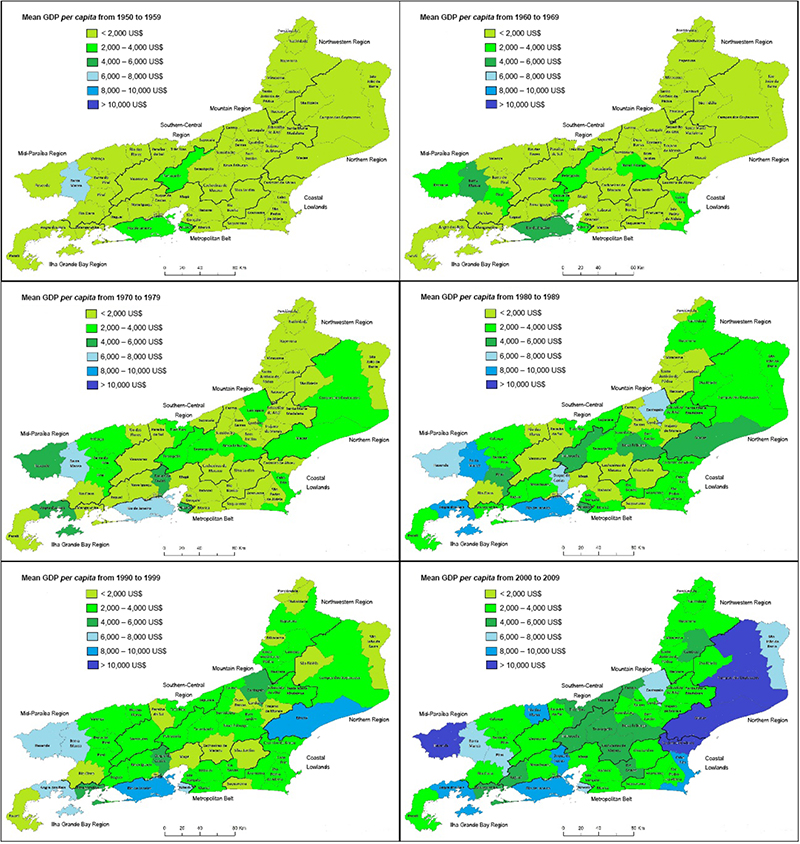Volume 31, Nº 2, March/April 2018
DOI: http://www.dx.doi.org/10.5935/2359-4802.20180003
ORIGINAL ARTICLE
Evolution of Mortality from Diseases of the Circulatory System and of Gross Domestic Product per Capita in the Rio de Janeiro State Municipalities
Gabriel Porto Soares
Carlos Henrique Klein
Nelson Albuquerque de Souza e Silva
Glaucia Maria Moraes de Oliveira

Figure 1 – Evolution of decennial GDP per capita in the Rio de Janeiro State municipalities from 1950 to 2009
Abstract
Background: Diseases of the circulatory system are the leading cause of death in Brazil and the world, falling progressively during the twentieth century, preceded by an increase in Gross Domestic Product.
Objective: To correlate balanced and adjusted mortality rates from circulatory system diseases in the municipalities of Rio de Janeiro state between 1979 and 2010 with the gross domestic product per capita (GDPpc) beginning in 1950.
Methods: Population and death data were obtained from the Department of Information and Computer Services at the National Health System/Brazilian Ministry of Health (Departamento de Informática do Sistema Único de Saúde - Ministério da Saúde - DATASUS-MS). Mortality rates were calculated for Ischemic Heart Disease (IHD), Cerebrovascular Disease (CBVD), and Circulatory System Disease (CSD); adjusted by the direct method; and balanced for ill-defined causes. The GDPpc data were obtained from the Institute of Applied Economic Research (Instituto de Pesquisas Econômicas Aplicadas - IPEA). Mortality rates were correlated with socioeconomic indicators using Pearson's linear correlation coefficient to determine the annual optimized lag time. Regression slope coefficients between the dependent disease and independent socioeconomic indicator were estimated.
Results: In recent decades, there has been a reduction in mortality from CSD in all Rio de Janeiro state municipalities, mainly due to a decline in mortality from CBVD. The decline in mortality from CSD was preceded by an increase in the GDPpc, and a strong correlation was observed between this index and mortality rates.
Conclusion: The evolution of the variation in GDPpc demonstrated a strong correlation with the reduction in CSD mortality. This relationship demonstrates the importance of improving the living conditions of the population to reduce cardiovascular mortality. (Int J Cardiovasc Sci. 2018;31(2)123-132)
Keywords: Stroke / complications; Mortality; Risk Factors; Gross Domestic Product.











